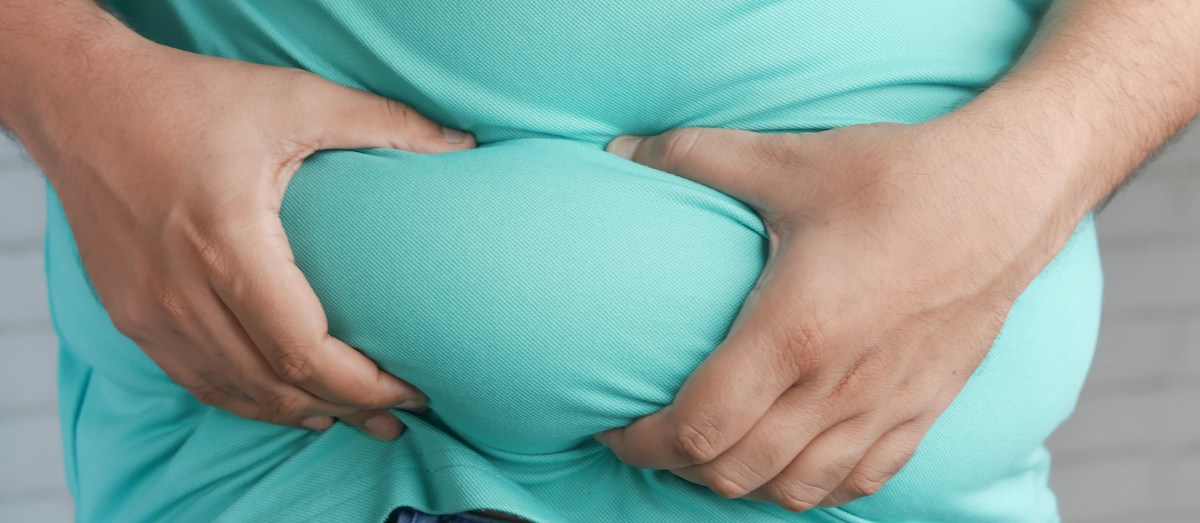Fat But Fit vs. Slim But Lazy: Which is Healthier?
We’ve all heard the old “just lose some weight, you’ll feel better!” advice from Aunt Karen (who has probably never hit the gym in her life). But here’s a plot twist: it turns out being a bit “fluffier” but active might actually be healthier than being skinny but glued to your couch like it’s your job.
Don’t take my word for it—science has entered the chat, and the results are both interesting and enlightening!
The Skinny on Fat vs. Fit
Let’s kick this off with some research.
A recent study led by researchers from the University of Michigan, published in Nature Metabolism, revealed that long-term exercisers, even those classified as obese by weight and BMI, possess significantly healthier belly fat tissue compared to their inactive counterparts.
Under the direction of Jeffrey Horowitz, a professor at Michigan’s School of Kinesiology, the team analyzed belly fat tissue from two groups. Both groups were matched in terms of body fat, weight, and sex. However, one group had been regularly exercising (at least four times a week) for over two years on average, while the other group had no exercise routine. The results highlighted remarkable differences in the biological and structural properties of the fat tissue between active and sedentary individuals.
For the exercisers, regular physical activity had led to healthier fat storage. More fat was deposited as subcutaneous tissue just beneath the skin, rather than visceral fat around organs—a key factor in disease risk. These active participants also had lower levels of harmful inflammation, increased blood vessel development, more mitochondria (the energy-processing structures in cells), and elevated levels of proteins that contribute to overall health. According to Horowitz, “Our findings suggest that beyond just burning calories, consistent exercise over months and years transforms fat tissue, enabling healthier fat storage as we age and inevitably gain some weight.”
Another study published in the European Heart Journal followed over 500,000 adults and found that physical fitness—even if you’re packing a few extra pounds—trumps being slim but sedentary when it comes to your overall health. Regular exercise reduced the risk of early death, no matter someone’s size. Meanwhile, those who barely left their sofas—regardless of their slim waistlines—saw their risks skyrocket.
It remains important to note, that being active isn’t a magic wand that totally erases the health risks of being overweight, and other studies show that even if someone is fit, if they are obese they will still be at higher risk of heart disease than someone fit and also slim. But it does even the playing field a bit. Basically, you can outrun (or out-walk, or even out-dance) your bad cholesterol. Who knew?
“Skinny Fat” is a Thing
Surprise! Is it possible to be slim, fit into your jeans, and still be… unhealthy? The term “skinny fat” isn’t just a clever Instagram caption—it’s a real thing. The scientific name is metabolically obese normal weight (MONW), but who wants to say that at parties? People who fall into this category may have low muscle mass, poor cardiovascular health, and higher levels of visceral fat (the kind that hugs your organs).
Here’s a fun fact: a 2020 study from the Journal of the American College of Cardiology showed that “normal-weight” people with a sedentary lifestyle have a higher risk of heart disease and diabetes than those who are overweight but regularly active. That’s right—just because someone looks like a model doesn’t mean their insides are in model shape.
Fitness is the Real Benefit
So, why is fitness such a game-changer? Regular exercise strengthens your heart, improves your mood (thank you, endorphins!), and keeps your muscles working like a well-oiled machine. It’s like giving your body a tune-up.
- Cardio improves heart health, reducing the risk of heart disease—whether you’re size 2 or 22.
- Strength training boosts your metabolism and builds lean muscle, which helps burn more calories at rest (yep, even while binge-watching Netflix).
- Flexibility and balance exercises improve joint health and reduce the risk of injury (no more awkwardly tripping over your own feet!).
Bottom line: It’s about what your body can do more than how it looks. A fit, active body—regardless of size—functions better, lasts longer, and has a better chance of kicking butt (in the literal and figurative sense) than a sedentary skinny one.
What the Science Says:
A 2023 study from the University of Aberdeen showed that consistent exercise changes how our bodies handle fat, especially the more problematic saturated fats. The researchers found that active people, even those categorized as overweight or obese, have healthier fat storage and metabolism than their thin-but-inactive counterparts. This suggests that exercising regularly can mitigate some of the metabolic risks associated with being overweight
So, Should You Ditch the Diet?
Before you run off to grab a pizza (wait, save me a slice), let’s be clear: this isn’t permission to live on donuts just because you’re working out. Eating healthy is still key, but there’s less pressure to hit a specific number on the scale. Balance is the secret sauce here. You can absolutely enjoy that extra slice of birthday cake—just pair it with a walk around the block or a dance party in your living room (no judgment on the song choice).
 “Fat But Fit” Role Models: Real People, Real Results
“Fat But Fit” Role Models: Real People, Real Results
Look at athletes like sumo wrestlers—OK, maybe not your first role model, but hear me out. These guys are large but incredibly strong and healthy (inside). Sure, they weigh more than your local gym’s weight machines, but they have very high muscle mass and cardiovascular health that rivals marathon runners.
Or take a look at a rugby union prop forward—they’re not exactly slim, but they are fast, powerful, and healthy because they keep their bodies moving.
Conclusion: Throw Out the Scale
The take-home message? Fit beats slim every time. Don’t stress so much about fitting into your “skinny” jeans and instead focus on getting your heart pumping. Go for a walk, hit the gym, dance like no one’s watching, or even chase your dog around the yard. Do what makes you feel good and keeps you moving. Personal training provides the ultimate accountability. And for the over 50s the benefits are even greater.
At the end of the day, health is about movement, not measurements. So, whether you’re rocking a dad bod, a hot bod, or anything in between—just get moving. Oh, and maybe send Aunt Karen this blog next time she brings up your weight at Christmas. .


Recent Comments